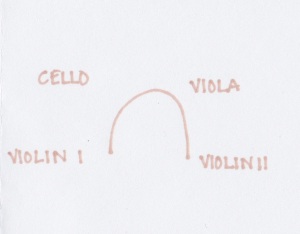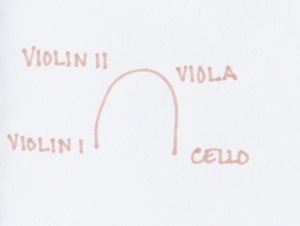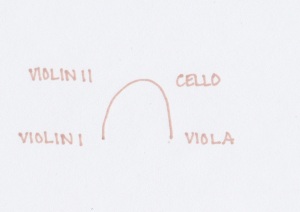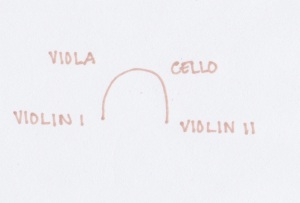When performing in string quartets, musicians usually sit in a semi-circle so that all of the musicians can see each other. Being able to see each other helps the musicians hear each other so they can better keep time and know where everyone is. However, the order in which they sit has changed over time.
Through the 19th century, the musicians were organized in the order of first violin, cello, viola, and second violin.
After the 19th century, however, the organization changed and the second violin and cello switched places. In contemporary times, this is the most common seating arrangement for string quartets. This arrangement is also the most like the seating arrangement in an orchestra.
However, an alternate arrangement, where the cello and viola are switched, is becoming increasing more used.
Interestingly, in all of the different arrangements, the first violin remains in the same place. This is probably because the first violinist is usually the one to signal when to start and end a piece and placing them on the end makes them easier to see.
While the seating arrangement for a string quartet is usually kept throughout the performance, in more recent years, it has become more fluid and some composers have begun to request specific seating arrangements for their pieces. The requests are usually made so that different aspects of the piece are better heard and visible to the audience.
An example would be contemporary composer Brian Ferneyhough who prefers this his quartets be played with this arrangement:
And contemporary composer Michael Finnissy who prefers that the first violin be seated separately from the rest of the musicians.
Bibliography
Stowell, Robin, ed. The Cambridge Companion to the String Quartet. Cambridge: Cambridge University Press, 2003.



